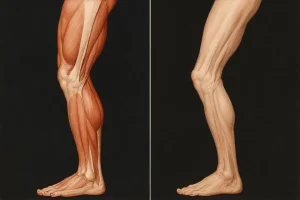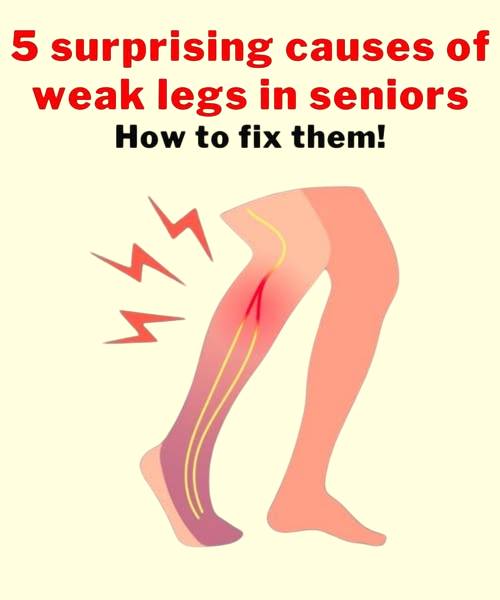It’s perfectly normal to feel concerned as you age if your legs don’t seem as strong as they once were. You might notice it when getting up from a chair or find climbing stairs more challenging than it used to be. While this can feel worrying, the positive news is that understanding the reasons behind leg weakness is the first step toward addressing it. Let’s explore why leg weakness can develop with age and, more importantly, what you can do to keep your legs strong and dependable.
Why Do Our Legs Weaken as We Get Older?
Leg weakness is frustrating, but it’s not something you have to simply accept. There are common causes behind it, and understanding them empowers you to take action. Here are five surprising reasons for weak legs in seniors—and practical solutions to combat them.

1. Muscle Loss (Sarcopenia)
One major factor contributing to weak legs is sarcopenia, or age-related muscle loss. After the age of 50, it’s typical to lose about 15% of muscle strength per decade , though this varies for each person. Being inactive accelerates this process, making regular movement essential to maintaining muscle mass and function.
How to Fix It:
- Incorporate resistance exercises into your routine, such as lifting light weights or using resistance bands.
- Focus on exercises like squats, lunges, and calf raises to target key leg muscles.
- Include protein-rich foods like eggs, lean meats, beans, and dairy in your diet to support muscle repair and growth.
2. Reduced Physical Activity
As people grow older, they may naturally slow down their activity levels due to lifestyle changes, health concerns, or lack of motivation. This sets up a harmful cycle: less activity leads to weaker muscles, which makes it even harder to stay active. Inactivity can also contribute to poor circulation, joint stiffness, and conditions like type 2 diabetes.
How to Fix It:
- Start small by incorporating daily walks, even if it’s just around the house or block.
- Try low-impact activities like swimming, cycling, or yoga to improve mobility without straining joints.
- Set realistic goals, such as walking an extra 5 minutes each day, to gradually increase your activity level.
3. Chronic Health Conditions
Certain long-term health problems, such as arthritis, diabetes, and peripheral neuropathy, can significantly impact leg strength. For example, nerve damage from diabetes may cause tingling or numbness, making movement uncomfortable and increasing the fear of falling. These fears often lead to reduced activity, worsening the issue.
How to Fix It:
- Work closely with your doctor to manage chronic conditions through medication, diet, and exercise.
- Engage in physical therapy to strengthen muscles safely while managing pain.
- Practice balance exercises, such as standing on one foot or heel-to-toe walking, to reduce the risk of falls.
4. Back Problems
CONTINUE READING ON THE NEXT PAGE 🥰💕

